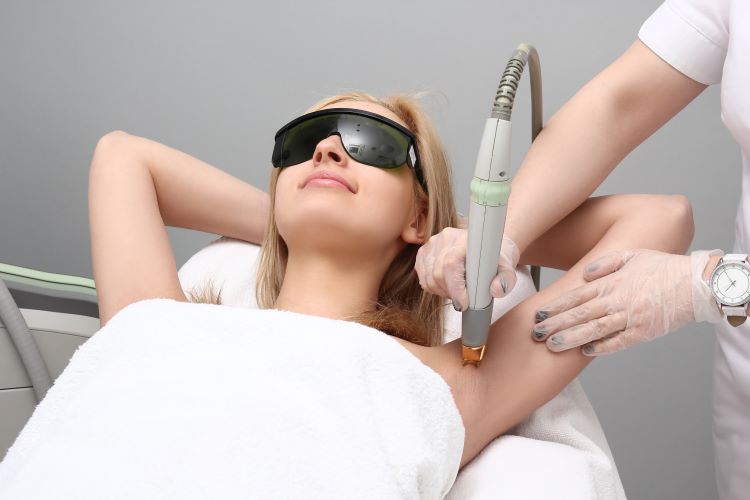Everything You Need to Know About Laser Skin Treatments
Laser skin treatments have revolutionized the beauty and dermatology industry, offering effective solutions for various skin concerns without the need for invasive surgical procedures. These advanced treatments use focused light energy to target specific skin issues, from unwanted hair and age spots to wrinkles and acne scars. Whether you're considering laser skin rejuvenation treatment or exploring laser hair removal options, understanding how these procedures work and what they can accomplish is essential for making informed decisions about your skincare journey.

What Do Laser Treatments Do for Your Skin?
Laser treatments work by delivering concentrated beams of light that penetrate the skin at specific depths and wavelengths. The laser energy targets particular components in your skin, such as melanin in hair follicles, blood vessels, or damaged skin cells. This targeted approach allows practitioners to address specific concerns while leaving surrounding healthy tissue largely unaffected. The heat from the laser stimulates collagen production, promotes cellular turnover, and can destroy unwanted pigmentation or hair follicles, depending on the treatment type and intensity used.
How Are Laser Treatments Useful for Different Skin Concerns?
Laser treatments offer remarkable versatility in addressing multiple skin issues. For anti-aging purposes, they can reduce fine lines, wrinkles, and sun damage while improving skin texture and tone. Laser skin rejuvenation treatment effectively targets age spots, melasma, and other pigmentation irregularities. Additionally, these procedures can minimize the appearance of acne scars, reduce pore size, and even out skin discoloration. The precision of laser technology allows dermatologists to customize treatments based on your specific skin type, concerns, and desired outcomes.
Understanding Laser Hair Removal and Its Benefits
Laser hair removal represents one of the most popular cosmetic laser procedures available today. This treatment targets the melanin in hair follicles, heating them to a point where future hair growth becomes significantly reduced or eliminated. The procedure works best on dark, coarse hair and requires multiple sessions spaced several weeks apart to catch hair follicles in their active growth phase. Most patients experience permanent hair reduction of 80-90% after completing their treatment series, making it an excellent long-term solution for unwanted body and facial hair.
Different Types of Laser Skin Rejuvenation Treatments
Several types of laser treatments cater to different skin concerns and recovery preferences. Ablative lasers, such as CO2 and Erbium lasers, remove the outer skin layer and require longer recovery times but deliver dramatic results for severe sun damage and deep wrinkles. Non-ablative lasers work beneath the skin surface without removing tissue, offering minimal downtime while still stimulating collagen production. Fractional lasers create microscopic treatment zones, combining effective results with faster healing times. IPL (Intense Pulsed Light) treatments, while technically not lasers, use broad-spectrum light to address multiple skin concerns simultaneously.
Laser Treatment Availability and Regulations in the United States
In the United States, laser skin treatments are regulated by the FDA, ensuring safety standards and efficacy requirements are met before devices reach the market. Many states require specific licensing and training for practitioners performing laser procedures, with some treatments legally restricted to licensed physicians or supervised medical professionals. The American Society for Dermatologic Surgery reports that over 1.1 million laser skin treatments are performed annually in the US, reflecting the growing acceptance and proven track record of these procedures among both patients and medical professionals.
Cost Considerations and Treatment Investment
The cost of laser skin treatments varies significantly based on the type of procedure, treatment area size, number of sessions required, and geographic location. Understanding these financial considerations helps you budget appropriately for your desired results.
| Treatment Type | Average Cost Per Session | Sessions Typically Needed | Total Investment Range |
|---|---|---|---|
| Laser Hair Removal (small area) | $150-$300 | 6-8 sessions | $900-$2,400 |
| Laser Hair Removal (large area) | $300-$800 | 6-8 sessions | $1,800-$6,400 |
| Fractional Laser Resurfacing | $500-$1,500 | 3-5 sessions | $1,500-$7,500 |
| IPL Photofacial | $300-$600 | 4-6 sessions | $1,200-$3,600 |
| CO2 Laser Resurfacing | $2,000-$5,000 | 1-2 sessions | $2,000-$10,000 |
Prices, rates, or cost estimates mentioned in this article are based on the latest available information but may change over time. Independent research is advised before making financial decisions.
When to Visit a Doctor for Laser Treatment Consultation
Scheduling a consultation with a qualified dermatologist or cosmetic surgeon is crucial before beginning any laser treatment regimen. You should seek professional evaluation if you have specific skin concerns that haven’t responded to topical treatments, want to address multiple skin issues simultaneously, or need guidance on the most appropriate laser option for your skin type. Additionally, individuals with darker skin tones, active skin conditions, or those taking certain medications require careful professional assessment to ensure treatment safety and effectiveness. A thorough consultation will include skin analysis, medical history review, and realistic expectation setting for your desired outcomes.
Laser skin treatments offer proven solutions for numerous cosmetic and dermatological concerns, from unwanted hair to signs of aging. Success depends largely on choosing the right treatment type for your specific needs, working with qualified professionals, and maintaining realistic expectations about results and recovery times. With proper research and professional guidance, laser treatments can significantly improve skin appearance and boost confidence while providing long-lasting results that make the investment worthwhile for many patients.
This article is for informational purposes only and should not be considered medical advice. Please consult a qualified healthcare professional for personalized guidance and treatment.




